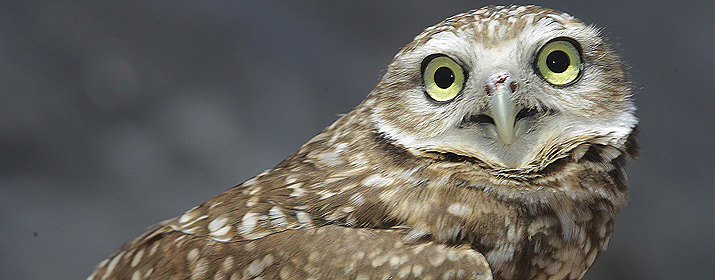
For 16 years, Tucson Electric Power employees have worked with Wild At Heart, a wildlife rescue group, to relocate burrowing owls to safer habitats.
TEP supports the Burrowing Owl Project and many other environmental programs as part of its philanthropic commitment to preserving and protecting the environment.
On a recent Saturday morning, TEP volunteers built six tents that helped a dozen owls acclimate to their new homes on a farmland plot near Marana. In this “owl condo,” the artificially-built burrows now have new residents.
“TEP provided us with funding for materials to build the owl habitats, machines to dig the trenches and operators to run the machines. They also send us enthusiastic volunteers who come out on hot, cold and wet days,” said Greg Clark, Wild At Heart’s Burrowing Owl Habitat Coordinator. “At every level of this project, TEP has been indispensable and a big help to our work.”
Burrowing owls are endangered in Canada, threatened in Mexico, and a bird of concern in Arizona. Because they live underground, their biggest threat is land development in addition to natural predators. These tiny 10-inch tall owls prefer to occupy dens abandoned by other animals because they are unable to dig their own in Arizona’s hard compacted soil.
Jessica Hayes, TEP Contact Center Analytics Supervisor and Community Action Team member, has been involved with this project for two years. She is among the nearly one-third of TEP employees who volunteer for various charities and causes in their free time.
“I’ve always been passionate about wildlife and nature, and this drew my attention. I’m also involved with TEP’s Raptor Protection program. I want to preserve our wildlife and like being able to see the positive impact from our work,” Hayes said.
Under Clark’s direction, volunteers assembled the release tents, which are metal frames covered with perforated mesh. Owls can see through the mesh to scout for predators, but the mesh conceals them from predators. “They need to be able to survey the area and spot any bad guys, such hawks,” Clark said.
Underneath the tents are several tunnels of tubing that lead underground to an overturned plastic bucket, which serves as a nest.
After 18 years of trial and error, Clark has perfected the artificial habitat and the introduction process with good results. The release tents, along with providing food and water for the owls, encourages these fickle raptors to settle in to their new homes. After a month, the tents will be removed.
TEP used to provide land for the burrows next to the H. Wilson Sundt Generating Station off of Irvington Road, but the owls eventually abandoned them to find other preferable habitats.
Clark said preserving and studying species such as the borrowing owl is important work because it teaches us about our impact on the environment.
“By studying the habits of wildlife and their impact on ecosystems and the environment, you begin to understand how valuable they are to us,” said Clark. “The burrowing owl is an early sentinel of problems with insects, pesticides or drought that are affecting the environment. This is an opportunity for people to directly participate in conservation and not just read about it in a book.”






